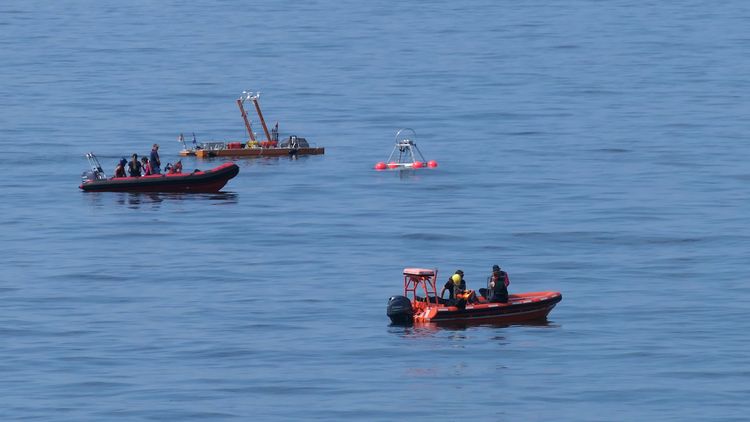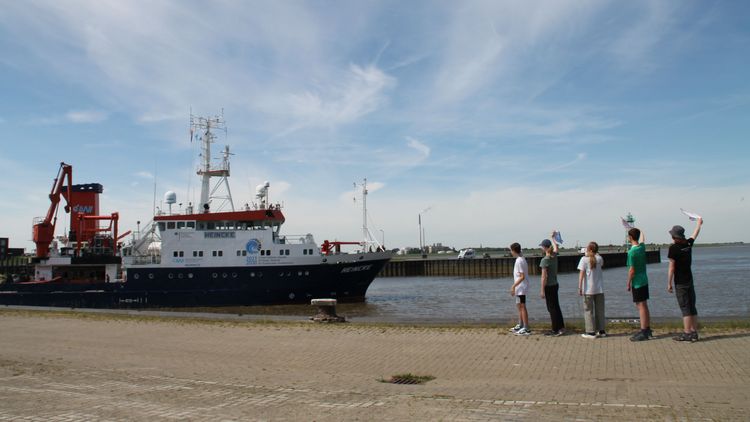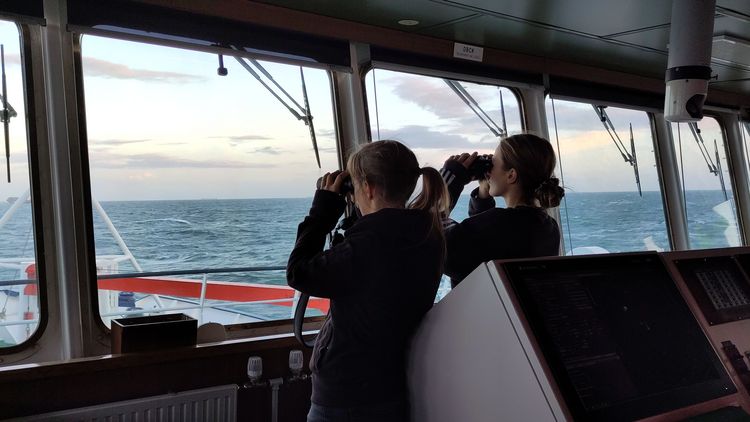Our oceans have a central function for the global climate. They store greenhouse gases and heat, can transport them thousands of kilometers and partially release them back into the atmosphere. All these exchange processes between the ocean and the atmosphere take place in the surface layer, which is less than a millimeter thick - where the ocean and atmosphere meet. This layer and the processes that take place in it are still poorly understood. Scientists from the research unit BASS (Biogeochemical Processes and Air-Sea-Exchange in the Sea-Surface-Microlayer) want to change this.
From July 9 to August 1, 2024, the BASS team will investigate and sample the sea area off Heligoland. Various technologies will be used on board the research vessel Heincke from the Alfred Wegener Institute (AWI) and the multi-purpose vessel Fritz Reuter. Sensors and probes provide real-time data on the exchange of heat, greenhouse gases and fresh water in the form of evaporation and rain. The two six-metre-long research catamarans “Halobates” and “Glaucus Atlanticus” can sail autonomously or remotely and thus take samples without interference. These are later analyzed in the laboratory for their chemical and biological composition. Sensors on board the catamarans measure the surface layer and the underlying water in real time. Further data and samples are collected by diving probes, buoys and drifters. The research plane JadeOne from Jade University of Applied Sciences in Wilhelmshaven flies above all of this and provides the researchers an overview of the sea area off Heligoland.
The surface layer on the oceans is omnipresent and up to 1 millimeter thick. Under favorable conditions, it forms a slimy biofilm full of algae and microbes and is like the skin of the ocean. Everything that the ocean and atmosphere exchange - gases, heat, fresh water and particles - must pass through this layer.
“The surface layer influences wave properties and exchange processes between the ocean and the atmosphere. The layer is an extremely dynamic habitat that is constantly changing. It is in constant interaction with the atmosphere, but also with the underlying water,” explains Prof. Dr. Oliver Wurl from the Institute for Chemistry and Biology of the Marine Environment (ICBM) and spokesperson for the DFG research unit BASS. “Due to their location between the ocean and the atmosphere, the surface films receive a very high dose of UV radiation and light, which in turn triggers unique photochemical reactions.” This biochemical reactor produces unique organic molecules, recycles organic material and is the basis of a unique microbial community. The researchers want to understand how this biochemical reactor works and which factors cause the biofilms to form in the first place.
A small group of five pupils from the “Na, Erde?” working group at the Neues Gymnasium in Oldenburg had a special opportunity on 9 July 2024 with their teachers Thomas Kämpfer and Dr. Bernhard Sturm. At the invitation of Prof. Dr. Oliver Wurl, they were given an exclusive tour of the research vessel Heincke during their school vacations shortly before it set sail for a large-scale measurement campaign around Heligoland.
In addition to the ICBM, the universities of Hamburg, Kiel and Vienna, the GEOMAR Helmholtz Centre for Ocean Research Kiel, Leibniz Institute for Tropospheric Research TROPOS and the Helmholtz Center Hereon are involved in the large-scale experiment and the DFG research unit BASS.

![[Translate to English:]](/f/5/_processed_/3/2/csm_ICBM-Logo-transparent-_91fe1c6774.png)





